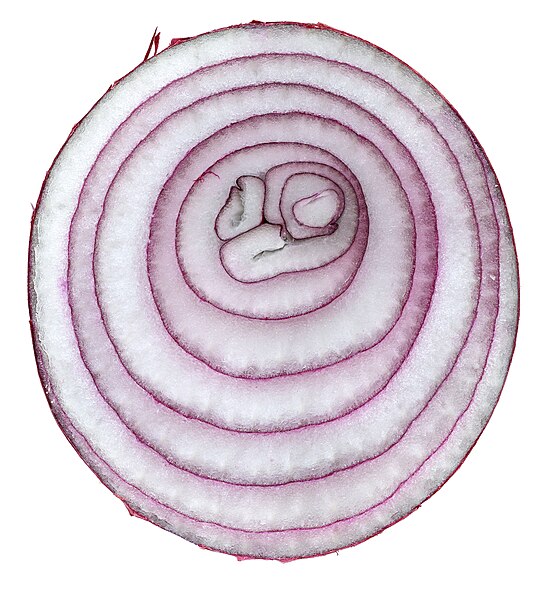Fritillaria (fritillaries) is a genus of spring flowering herbaceous bulbous perennial plants in the lily family (Liliaceae). The type species, Fritillaria meleagris, was first described in Europe in 1571, while other species from the Middle East and Asia were also introduced to Europe at that time. The genus has about 130–140 species divided among eight subgenera. The flowers are usually solitary, nodding and bell-shaped with bulbs that have fleshy scales, resembling those of lilies. They are known for their large genome size and genetically are very closely related to lilies. They are native to the temperate regions of the Northern hemisphere, from the Mediterranean and North Africa through Eurasia and southwest Asia to western North America. Many are endangered due to enthusiastic picking.
Fritillaria
Stem and leaves: F. drenovskii
F meleagris with campanulate perianth and tesselated segments
Section through flower of F. meleagris
In botany, a bulb is a short underground stem with fleshy leaves or leaf bases that function as food storage organs during dormancy. In gardening, plants with other kinds of storage organ are also called ornamental bulbous plants or just bulbs.
Shallot bulbs
Hippeastrum (amaryllis) bulb
Cross section of onion bulb
Bulbils form in the leaf axils of Lilium lancifolium








